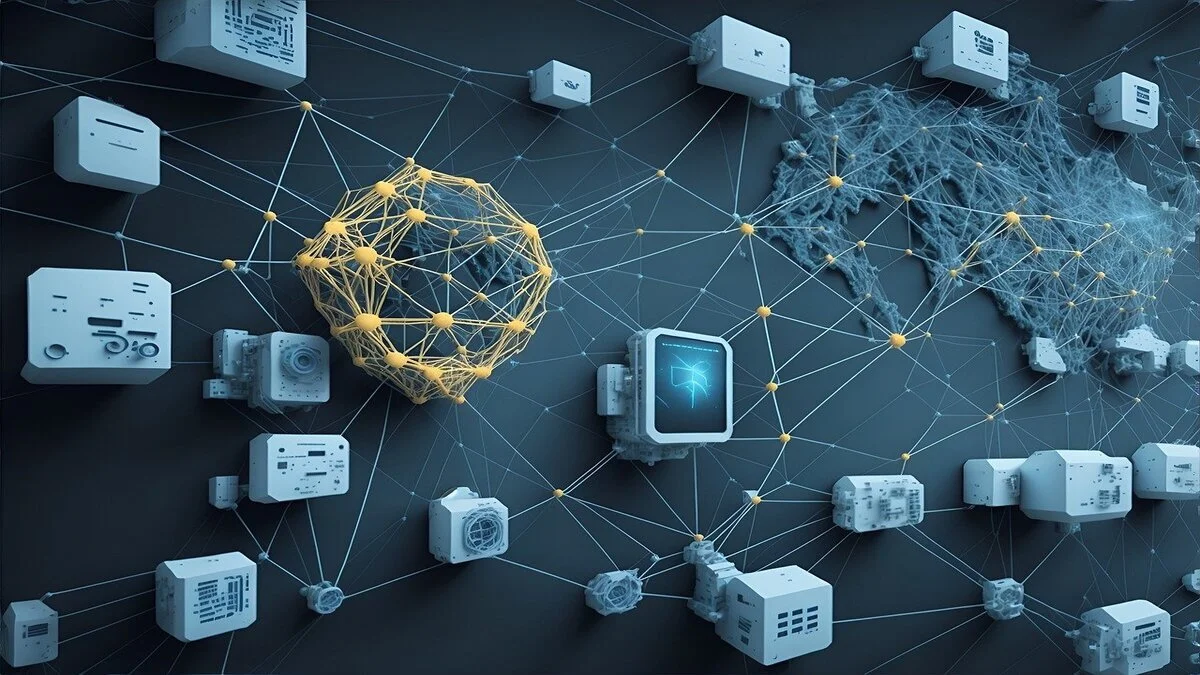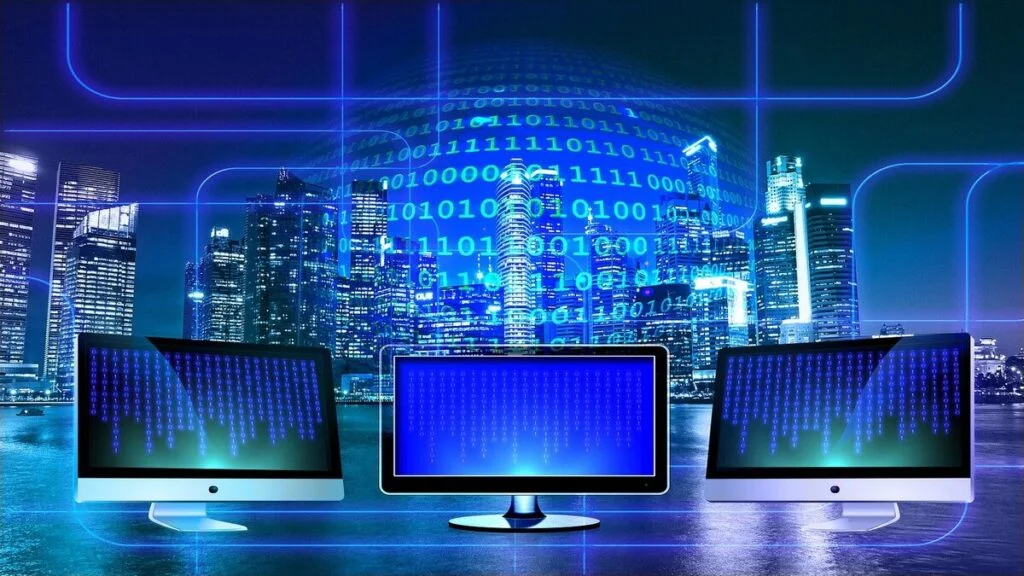The use of blockchain technology has influenced the system of several processes. This innovation has many potentials evident in the intersection of blockchain and the Internet of Things (IoT). Learn more about this as you read on.
In the dynamic world of technology, two groundbreaking concepts have captured the attention of both innovators and industries: Blockchain and the Internet of Things (IoT). While each of these innovations holds the potential to revolutionize their respective domains, their convergence presents a realm of possibilities that can profoundly transform our lifestyles, work processes, and interactions. This article takes an in-depth look at the comprehensive view of the interplay between Blockchain and IoT, examining their synergies, challenges, and the promising potential they offer.
Understanding the Fundamentals
Before delving deeper into the intersection of these technologies, let’s establish a foundational understanding of each concept:
Blockchain
At its core, blockchain serves as a decentralized and tamper-resistant digital ledger that securely records transactions. In addition, it operates on a distributed network of computers, or nodes, with each node possessing a copy of the entire ledger.
Transactions are also grouped into blocks and linked using cryptographic methods, thus creating an immutable chain.
Internet of Things (IoT)
IoT refers to the intricate network of interconnected devices, objects, and systems that communicate and exchange data over the Internet. These devices, ranging from household gadgets to industrial machinery and vehicles, are equipped with sensors, actuators, and connectivity features.
Connection Between Blockchain and IoT
The fusion of blockchain and IoT surpasses technical integration, ushering in innovation where trust, autonomy, and efficiency converge to reshape industries, systems, and technology interactions. This intersection has vast potential for new business models, enhanced collaboration, and solutions to intricate challenges across various sectors. Below are some of the possibilities that the merger of blockchain and the Internet of Things can bring about:
- Data Integrity and Security
- Smart Contracts
- Enhanced Supply Chain Visibility
- Decentralized Decision-Making
- Edge Computing and Data Monetization
- Immutable Audit Trails
- Decentralized Identity
- Micropayments and Micro Markets
- Integrated Supply Chain Networks
- Sustainability Initiatives
- Provenance and Intellectual Property
- Localized Data Sharing

1. Data Integrity and Security
IoT generates extensive data susceptible to breaches and manipulation. However, blockchain’s decentralized and cryptographic framework can enhance data security by ensuring data accuracy and origin. So, each data point can be time-stamped and connected to a unique transaction on the blockchain, rendering alterations nearly impossible without consensus across the network.
2. Smart Contracts
Blockchain facilitates the creation of smart contracts, self-executing agreements governed by predefined rules. These contracts can automate processes within IoT ecosystems. For instance, a smart contract could automatically trigger maintenance requests when IoT sensors detect anomalies in industrial machinery.
3. Enhanced Supply Chain Visibility
Blockchain can infuse transparency into supply chains by recording every step of a product’s journey. This proves invaluable in industries where traceability and authenticity are pivotal, such as the food and pharmaceutical sectors. IoT devices can then seamlessly feed real-time data into the blockchain, enabling consumers to validate product origins and pathways.
4. Decentralized Decision-Making
Integrating IoT’s data acquisition capabilities and blockchain’s decentralized structure can pave the way for autonomous decision-making across various sectors. For example, a fleet of autonomous vehicles could collaboratively make route decisions based on real-time traffic data without relying on a central authority.
5. Edge Computing and Data Monetization
The link between blockchain and IoT extends beyond data security and transparency. IoT devices generate vast amounts of data, often at the network’s edge, where it originates.
By merging blockchain with edge computing, this data can be processed, validated, and monetized securely via smart contracts. For instance, weather data collected by an IoT device could get directly sold using blockchain-based agreements, removing the need for intermediaries.
6. Immutable Audit Trails
Beyond transaction history, blockchain can establish immutable audit trails for IoT data. This proves crucial in industries prioritizing regulatory compliance and accountability, like finance and healthcare. Each interaction with IoT data can be recorded on the blockchain, ensuring transparency and traceability throughout the data’s life cycle.
7. Decentralized Identity
IoT devices often require verifiable identity when communicating with other systems. Blockchain provides a tamper-proof identity framework for these devices. This guarantees that only authorized devices communicate, mitigating risks of malicious attacks or unauthorized access within IoT networks.
8. Micropayments and Micro Markets
Blockchain’s efficiency with microtransactions opens avenues for micropayments and micro markets within IoT. Devices could autonomously pay each other for using resources or services. For example, an IoT-connected printer might independently purchase ink from a supplier as ink levels run low, all registered on the blockchain.
9. Integrated Supply Chain Networks
Blockchain facilitates the creation of integrated supply chain networks, where IoT devices collaboratively optimize processes. In agriculture, IoT devices on farms could communicate with blockchain-enabled contracts that automatically trigger orders for fertilizers based on real-time data.
10. Sustainability Initiatives
IoT devices contribute to sustainability efforts by collecting environmental data. Verified and securely stored on a blockchain, this data monitors and tracks progress towards sustainability goals like carbon emission reduction or efficient waste management.
11. Provenance and Intellectual Property
Blockchain’s provenance and ownership features extend to intellectual property rights for IoT-generated content. Creators of such content can use blockchain to establish and safeguard ownership rights, ensuring fair compensation.
12. Localized Data Sharing
Blockchain ensures secure and controlled data sharing among authorized parties in scenarios requiring localized data sharing due to privacy concerns. For instance, IoT data on traffic flow could be shared among municipal departments within a smart city context while upholding data privacy.
Challenges in Merging Blockchain and the Internet of Things (IoT)
There are still some challenges in the process of this fusion. However, some of these constraints have considerable solutions, as seen below:
- Scalability
- Interoperability
- Energy Efficiency
- Preserving Data Privacy

1. Scalability
Both blockchain and IoT generate substantial data volumes. Hence, successfully integrating these technologies requires addressing scalability concerns to accommodate the influx of transactions and data transfers without compromising efficiency.
2. Interoperability
Also, since IoT devices originate from diverse manufacturers and operate on varied platforms, ensuring interoperability between these devices and blockchain networks becomes challenging. Establishing standards and protocols is thus imperative to facilitate seamless integration.
3. Energy Efficiency
Blockchain networks consume significant energy resources, particularly those based on Proof of Work. Incorporating energy-efficient consensus mechanisms like Proof of Stake becomes crucial when dealing with resource-constrained IoT devices.
4. Preserving Data Privacy
While blockchain offers heightened data security, it raises questions about data privacy. Striking a balance between transparency and confidentiality is essential, particularly when handling sensitive personal or corporate data gathered by IoT devices.
Future Prospects of the Intersection of Blockchain and
Internet of Things (IoT)
The intersection of blockchain and IoT ushers in transformative possibilities that ensure swift and more secure technological processes. Some of these possibilities are:
- Autonomous Economies
- Decentralized Energy Grids
- Revolutionizing Healthcare
1. Autonomous Economies
IoT devices equipped with wallets and capable of executing blockchain microtransactions could participate in autonomous economies. For instance, a self-driving car could autonomously cover expenses like parking fees, tolls, and charging services.
2. Decentralized Energy Grids
IoT-enabled smart meters can gather real-time energy consumption data, while blockchain can enable secure peer-to-peer energy trading. This could lead to the establishment of decentralized energy grids, reducing dependence on traditional utilities.
3. Revolutionizing Healthcare
Wearable IoT devices could continuously monitor health metrics and securely share them with medical professionals via blockchain. This could enable more accurate diagnoses and timely medical interventions.
Conclusion
The convergence of Blockchain and IoT signifies more than just a technological fusion; it heralds a paradigm shift with the potential to reshape industries, economies, and societies. While challenges persist, the advantages of heightened security, transparency, and efficiency make the endeavor to integrate these technologies compelling. As both fields continue to evolve, collaboration among innovators, policymakers, and industry leaders is essential to unlock the full potential of this dynamic crossroads and craft a more secure and interconnected world.
